Mastering ARM Templates: A Comprehensive Step-by-Step Guide to Azure Resource Creation
 Hema Sundharam Kolla
Hema Sundharam KollaWhat are the different ways to create resources in Azure?
1.Azure CLI
2.Azure console or portal
3.Azure Resource Manager Templates(ARM Templates)
4.Bicep
5.Software Development Kit
There are other efficient ways to create resources, such as using infrastructure as code tools like Puppet, Chef, Salt, Ansible, and Terraform, especially if you need to create many VMs.
Why Arm Templates?
As a DevOps engineer, using ARM templates offers several advantages over other deployment methods like Bicep, Terraform, CLI, or Portal. ARM templates provide a declarative way to define infrastructure as code, allowing for version control, reuse, and modularization. They also enable seamless integration with Azure services and support complex deployments. Additionally, ARM templates are native to Azure, reducing the need for additional tooling or frameworks. While Bicep and Terraform offer similar benefits, ARM templates are specifically designed for Azure, making them a more natural choice. CLI and Portal are more suited for ad-hoc deployments, whereas ARM templates enable automated, repeatable, and auditable deployments. Overall, ARM templates provide a robust and efficient way to manage Azure infrastructure as code, making them a popular choice among DevOps engineers.
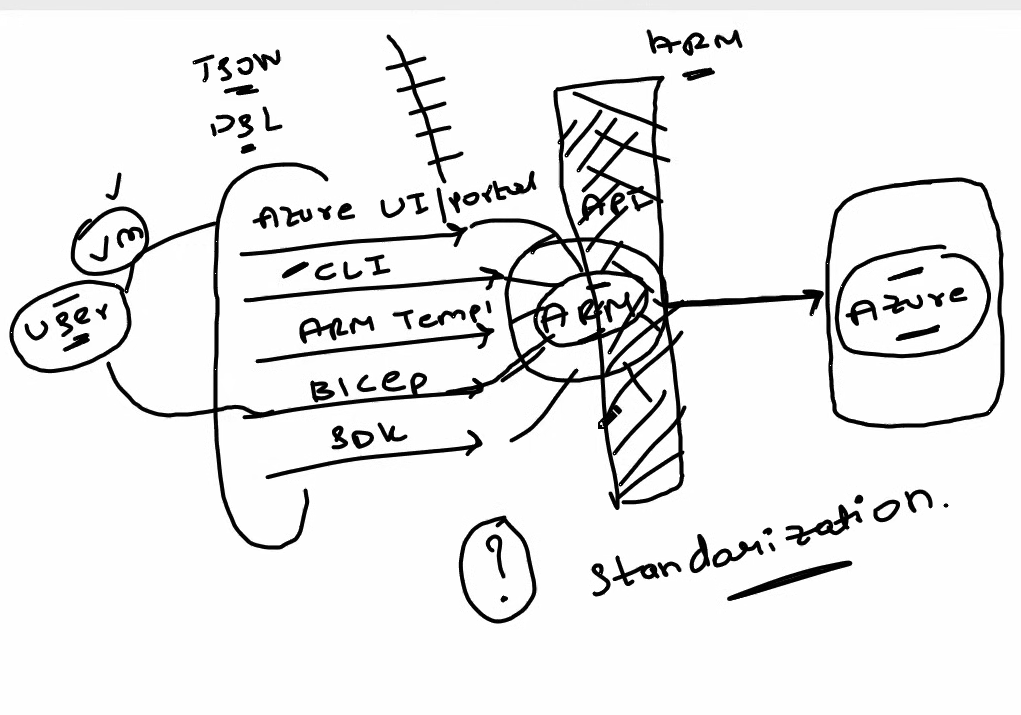
What is Standarization?
In the context of using ARM templates, standardization refers to the practice of creating consistency in the structure, syntax, and content of ARM templates across an organization or project. This includes:
Template organization and naming conventions
Resource naming and tagging conventions
Consistent use of parameters, variables, and functions
Standardized resource configurations and settings
Common deployment patterns and architectures
Standardization in ARM templates helps to:
Improve template maintainability and reusability
Reduce errors and inconsistencies
Enhance collaboration and knowledge sharing among team members
Simplify template management and updates
Ensure compliance with organizational policies and security requirements
By standardizing ARM templates, organizations can create a library of reusable, modular, and well-structured templates that can be easily shared and deployed across different environments and projects.
How ARM templates create resources in Azure?
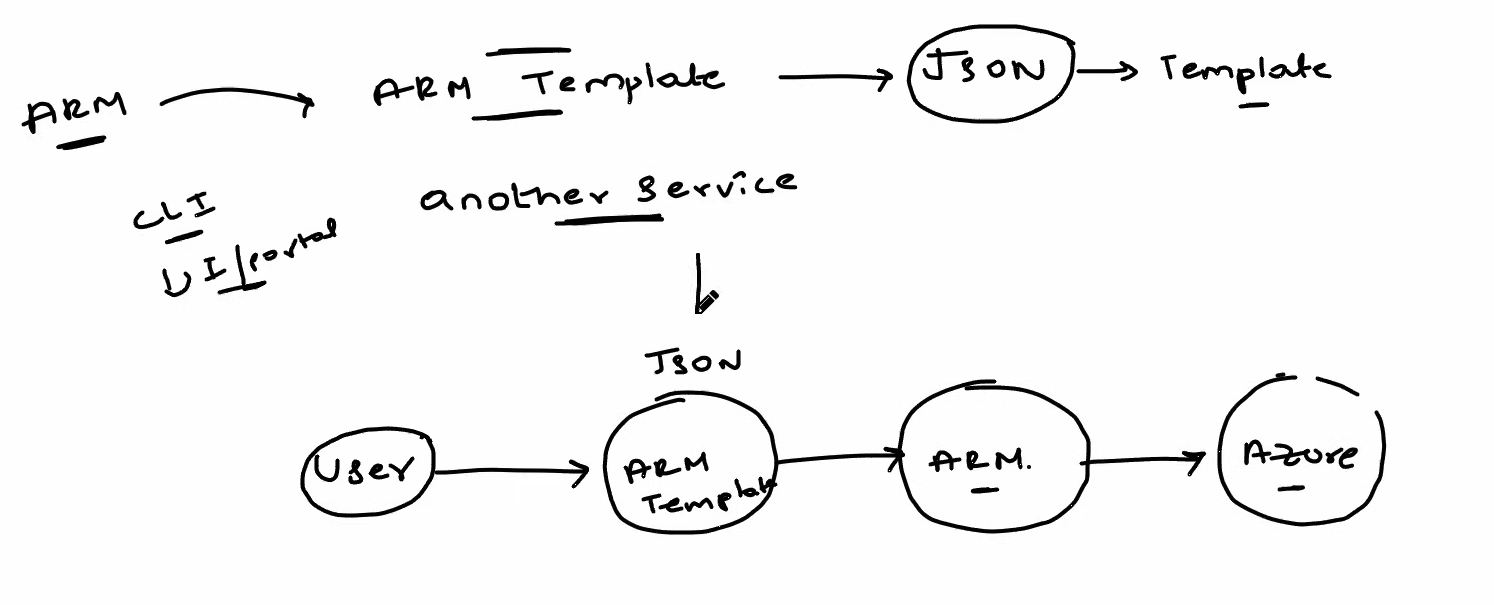
ARM templates are written in JSON, and once a user writes the JSON code (the ARM template) and sends it to the Azure Resource Manager (ARM), the ARM verifies it and creates the resource in Azure based on the template.
Steps for writing ARM templates
Let's say we can write ARM templates in two ways: either by writing them ourselves or by referring to the ARM templates documentation where we can find JSON code for creating everything.
Step 1 : Go to vs code and click on Extensions tab and search for Azure Resource Manager (ARM) Tools
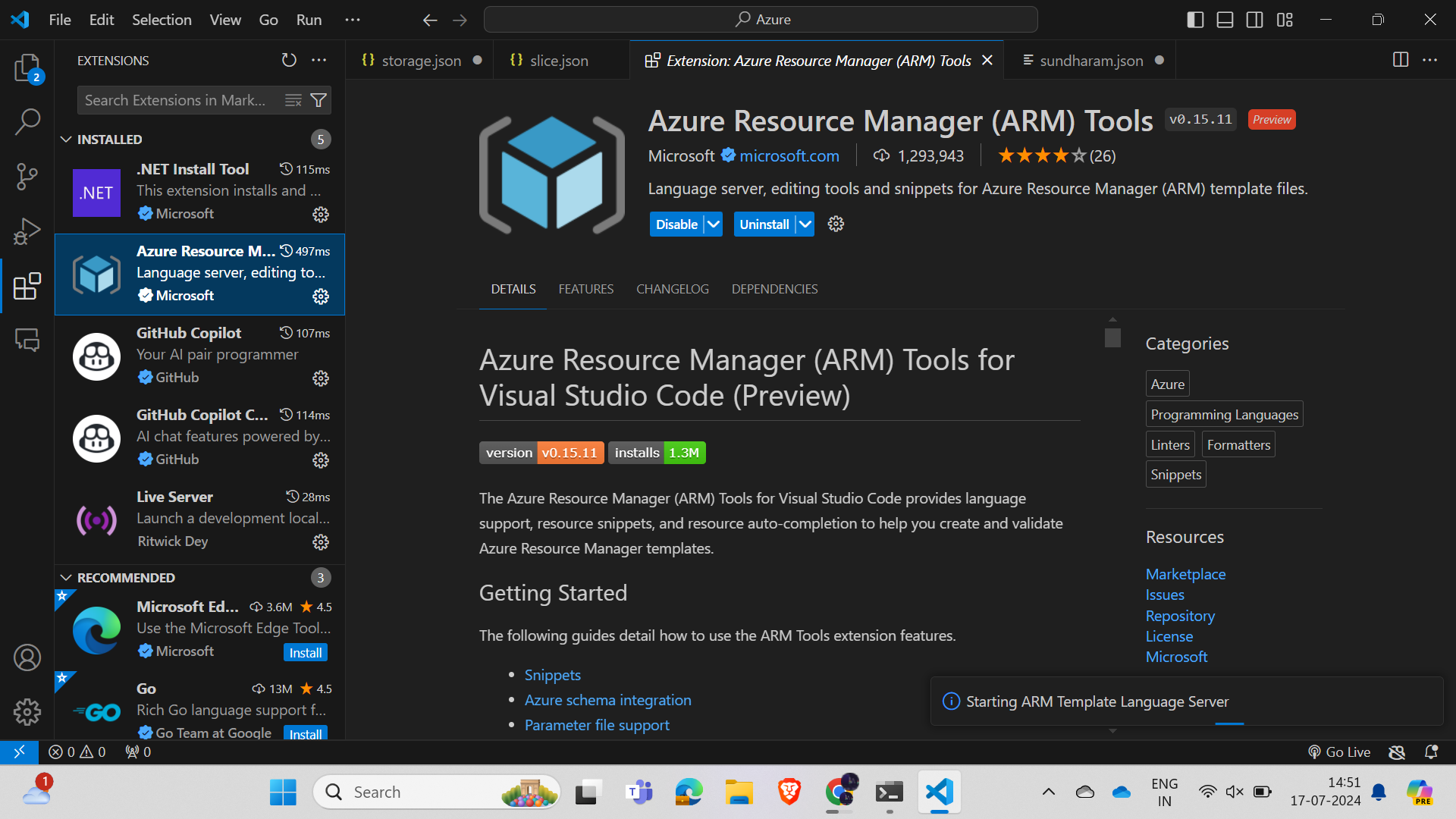
This helps us in writing code very easy and Faster

Select the first one if you have no experience writing JSON; it's very easy and will help you write the code with a single click.

See how easy it is; with one click, we generated code, and now to create a storage account, you need to write the code under resources.
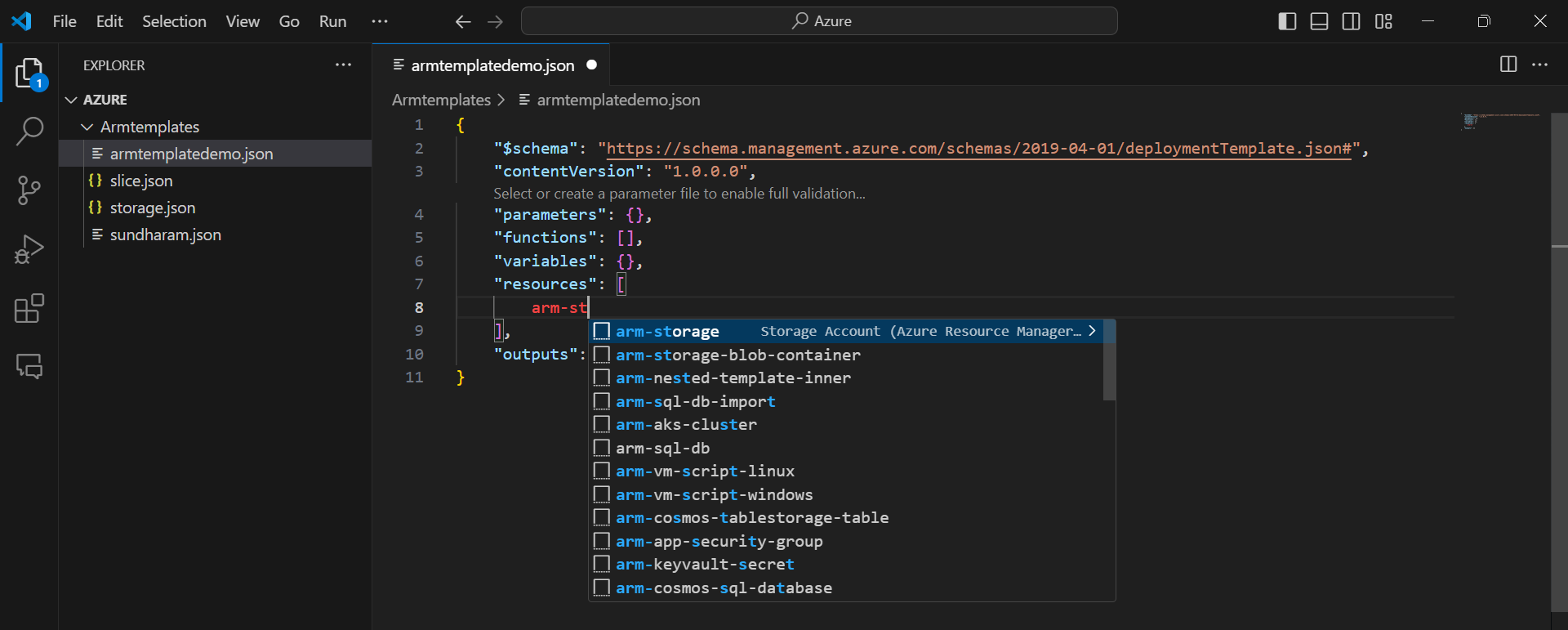
Click on ARM storage, and with one click, you will see the code there.
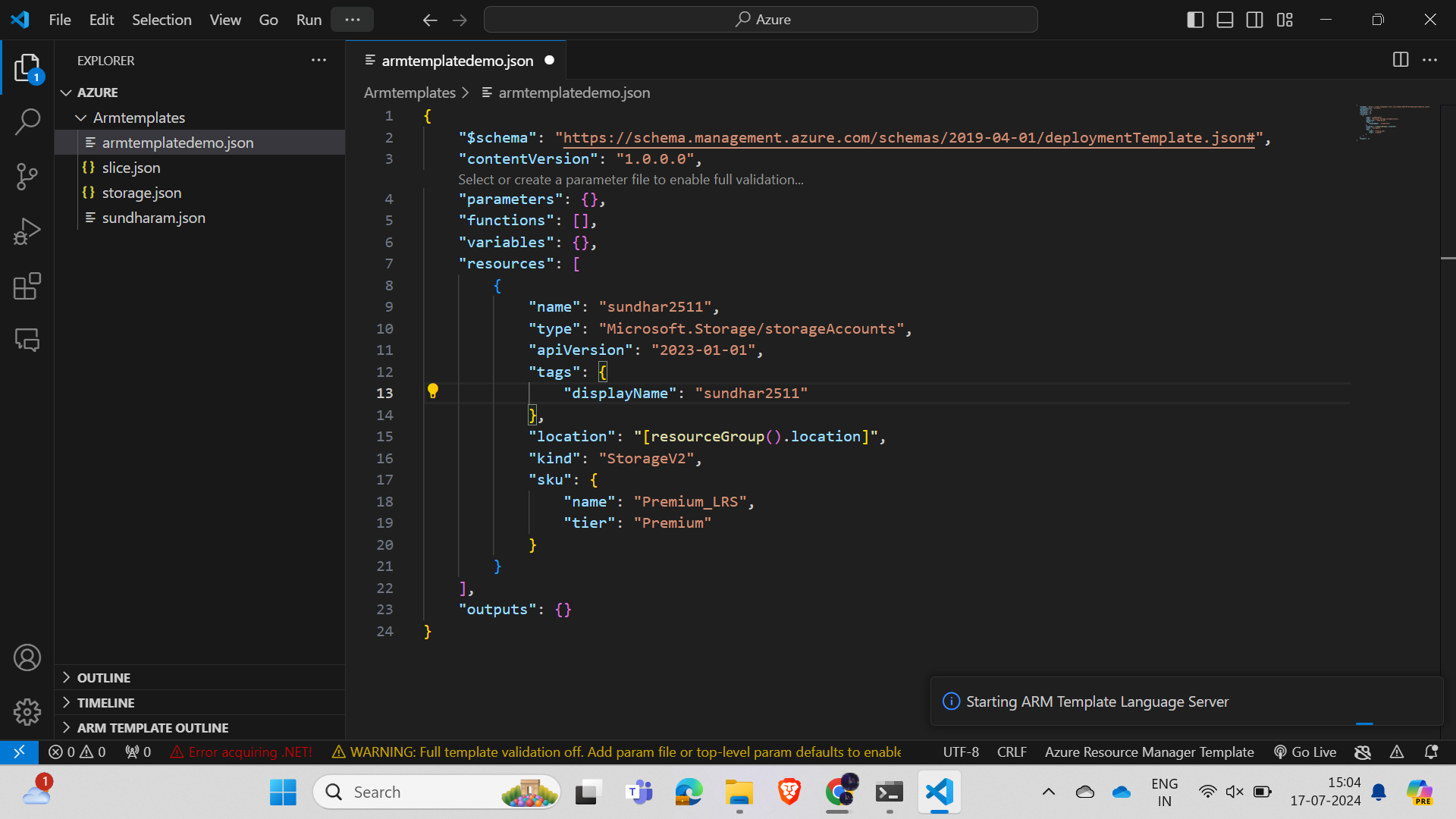
Just modify the name, and you are set to create the resource in Azure.
After this, log in to your Azure CLI using the terminal in VS Code, check the version with az version, and then log in with az login, which will prompt you to select your account and log in successfully.
And then create a resource group through Azure CLI using the command:
az group create --name vscode --location 'Central US'
You need to execute the written file in VS Code to create the resource without using the Azure console by running the code or script with the following command:
az deployment group create --resource-group vscode --template-file 01-storage-account.json
Change the name of the --resource-group and the --template-file in the command according to your requirements.
Go to your Azure account, and you will see the storage account created along with a resource card.
Conclusion :
ARM templates offer a powerful and efficient way to manage Azure infrastructure as code. By leveraging the declarative nature of ARM templates, DevOps engineers can ensure consistent, repeatable, and auditable deployments. The standardization of templates enhances maintainability, reduces errors, and fosters collaboration. With tools like Visual Studio Code and Azure Resource Manager (ARM) Tools, creating and deploying resources becomes straightforward and streamlined. Embracing ARM templates not only simplifies the deployment process but also aligns with best practices for infrastructure management in Azure.
Subscribe to my newsletter
Read articles from Hema Sundharam Kolla directly inside your inbox. Subscribe to the newsletter, and don't miss out.
Written by

Hema Sundharam Kolla
Hema Sundharam Kolla
I'm a passionate Computer Science student specializing in DevOps, cloud technologies, and powerlifting. I've completed several certifications, including AWS Cloud Practitioner and Google’s Generative AI badge, and I'm currently exploring both AWS and Azure to build scalable, efficient CI/CD pipelines. Through my blog posts, I share insights on cloud computing, DevOps best practices, and my learning journey in the tech space. I enjoy solving real-world problems with emerging technologies and am developing a platform to offer career advice to students. Outside of tech, I'm a competitive powerlifter, constantly striving to improve and inspire others in fitness. Always eager to connect with like-minded individuals and collaborate on projects that bridge technology and personal growth.